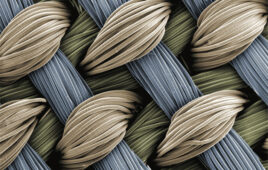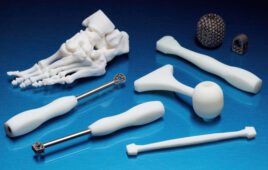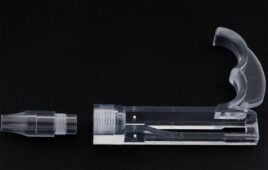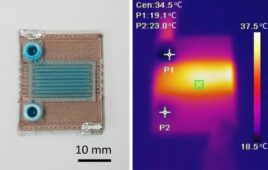Breast tissue regeneration

This breast implant was 3D printed with Stratasys P3 technology using CollPlant bioink. [Photo courtesy of Stratasys]
CollPlant said its bioprinted regenerative tissue formed connective tissue and neovascular networks in a preclinical, large-animal study that had no adverse events. CollPlants said it plans to follow up this year with another large-animal study using commercial-size implants ahead of human studies and product commercialization.
“The combined, pioneering technologies of both companies will streamline the development and production process so that we have the most efficient means to produce our regenerative breast implants and other potential tissues and organs,” CollPlant CEO Yehiel Tal said. “We believe that our rhCollagen-based regenerative implant has the potential to overcome the challenges of existing breast procedures that use silicone implants or autologous fat tissue transfer.”




